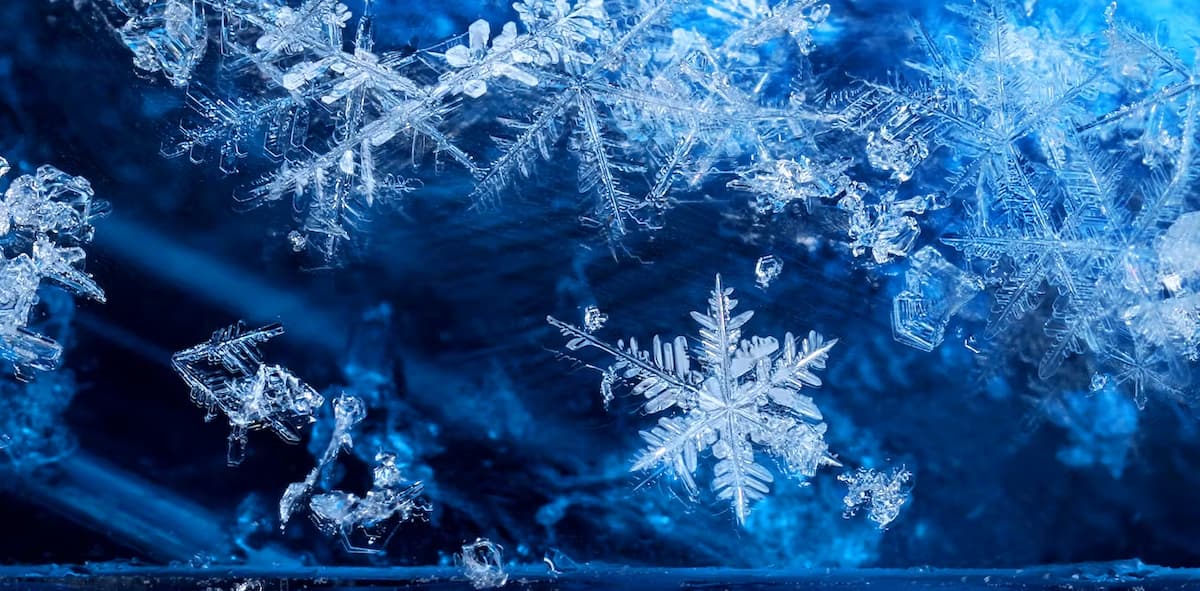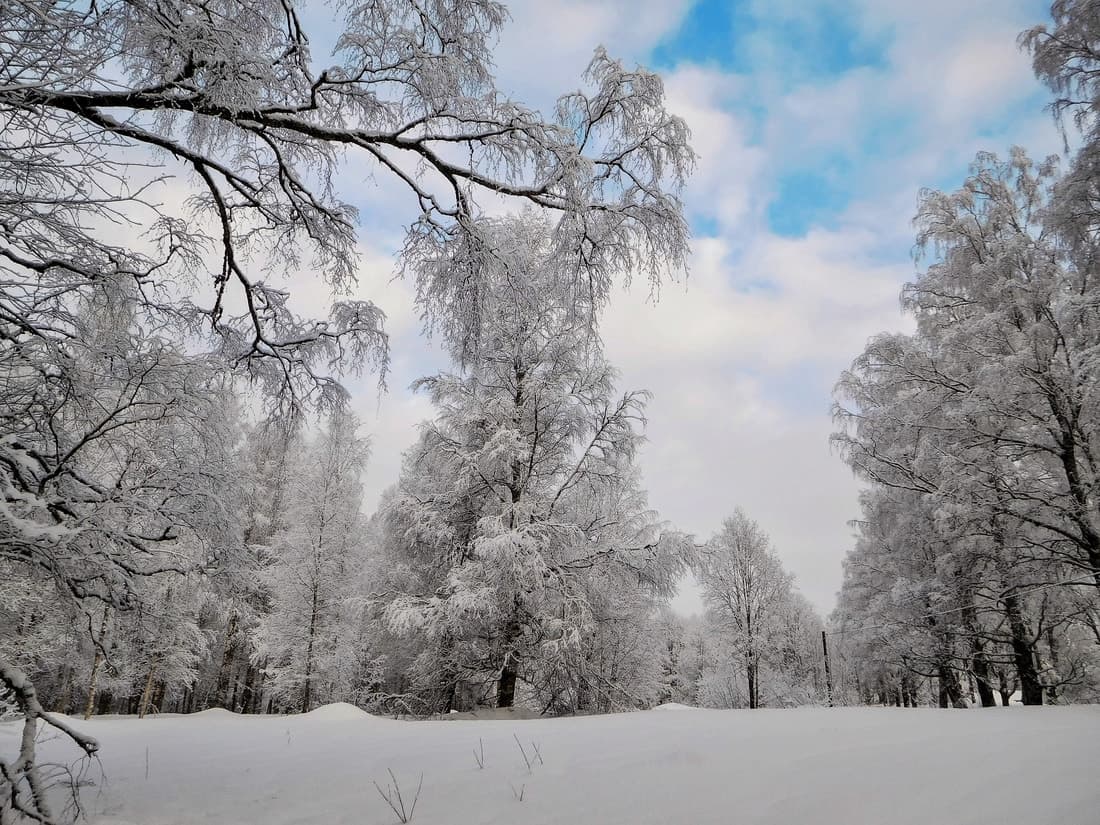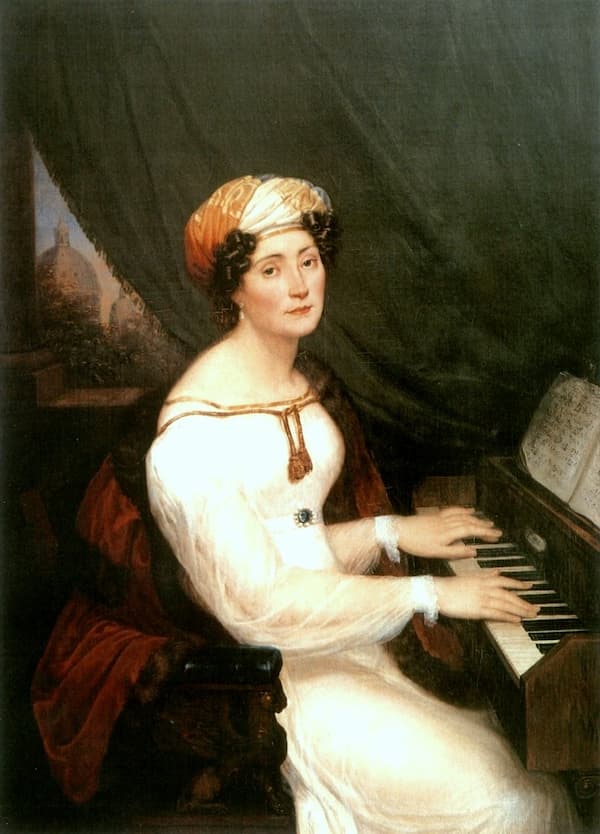The delicate dance of snowflakes – the hushed stillness of a winter landscape – the fury of a raucous blizzard… It’s easy to see why composers have been inspired by these snowy scenarios for generations.
So bundle up and join us as we take a tour through some of the best classical music inspired by snow.

© ‘Tis the season. Anteromite/Shutterstock
Antonio Vivaldi: Winter from the Four Seasons (ca. 1720)
When Italian composer Antonio Vivaldi wrote a series of four violin concertos, each depicting one of the four seasons, he included sonnets in the score describing the specific scene that his music was portraying.
Winter’s sonnet included lines like this:
To tremble from cold in the icy snow,
In the harsh breath of a horrid wind;
To run, stamping one’s feet every moment,
Our teeth chattering in the extreme cold
You can hear the musical representation of teeth chattering in the opening of this concerto.
Franz Liszt: Transcendental Étude No. 12, “Chasse-neige” (1852)
For his twelfth so-called Transcendental Etude, nicknamed Chasse-neige (“snow whirls”), Franz Liszt took a snowstorm as his inspiration.
The main skill that the etude focuses on is tremolo, i.e., rapid repetition of notes. The tremolo in this etude brings to mind all sorts of wintry phenomena, including wailing winds, whirling snowfall, and shivering pedestrians.
Jacques Offenbach: Ballet of the Snowflakes from Le voyage dans la lune (1875)
The plot of Jacques Offenbach’s opera Le voyage dans la lune (“The voyage to the moon”) is pretty wild.
A prince decides that he wants to land on the moon, so he’s put into a cannon shell and shot into space with his father and the kingdom’s scholar (named Microscope for some reason).
In this universe, the moon is populated by aliens, and hijinks ensue. It’s a long story, but the main characters end up in the Land of the Paunchy (don’t ask), and winter blows in, along with a charming ballet number.
Nikolai Rimsky-Korsakov: The Snow Maiden (1880-81)
The opera The Snow Maiden has three types of characters: mythological ones (such as Frost), fully human ones (such as Kupava), and ones that are half-mythological and half-human (such as the Snow Maiden herself).
To represent them, Rimsky-Korsakov mixes fanciful music with earthier folk music.
The opera ends with a fifteen-year-long winter being ended by the melting of the Snow Maiden, who, by falling in love, has doomed herself in a shaft of sunlight.
Pyotr Ilyich Tchaikovsky: Waltz of the Snowflakes from The Nutcracker (1891-92)
The Nutcracker is the most famous ballet of all time, and many people know the story: a young girl named Clara is gifted a magic nutcracker at a Christmas party and dreams of all sorts of enchanted lands and dancers.
At the end of the first act, the nutcracker transforms into a handsome prince and snowflakes dance while ushering him and Clara into his kingdom.

© finlandnaturally.com
Alexander Glazunov: Winter from the Four Seasons (1899)
Alexander Glazunov’s ballet The Seasons begins with a movement portraying winter.
In this movement, the character Winter, personified by a male dancer, is entertained by his wintry friends: Snow, Hail, Ice, and Frost.
In the middle of the snowstorm, two gnomes enter with destructive intentions. They light a fire…and everyone disappears!
Jean Sibelius: Diamanten på Marssnön (1899-1900)
“Diamanten på marssnön,” translated from Swedish, means “The diamond on the March snow.”
In this song, Sibelius, often known for his starkness, leans into a lush, romantic aesthetic.
Finnish poet Josef Julius Wecksell wrote the poem that provides the lyrics. That poem personifies a sparkle in the snow, explaining how it looks up adoringly at the sun…and is also melted by it.
O, fairest fate to love
The highest that life brings,
to glisten in its radiance,
and die, amid its smile.
Cécile Chaminade: Chanson de neige (1906)
French composer Cécile Chaminade was a famously prolific composer who specialized in writing songs and piano pieces for the middle-class sheet music market.
Because of this, her gender, and her historic popularity among women, she has often been unfairly characterized as unintellectual. In reality, her songs are cleverly constructed and deeply moving.
“Chanson de neige” translates into “Song of snow.” The narrator asks:
Oh snow, white snow
That makes the horizon gray,
Why do I smile at you?
Why do I smile at you,
If you do not smile upon me?
Claude Debussy: The Snow is Dancing from Children’s Corner (1906-08)
Between 1906 and 1908, Claude Debussy wrote six pieces for solo piano and dedicated them to his toddler daughter Claude-Emma, nicknamed Chou-Chou. He called the suite Children’s Corner.
The fourth piece is called The Snow Is Dancing and portrays a scene of furiously falling snow.
Claude Debussy: Des pas sur la neige from Préludes Book I (1909)
The Snow Is Dancing wouldn’t be the last snow-inspired work that Debussy would write.
Shortly after finishing Children’s Corner, Debussy wrote a piano prelude called “Footsteps in the Snow” (the English translation of “Des pas sur la neige”).
He wrote that this piece should be played “entre quatre-z-yeux”, which means “between four eyes.” This was a coded phrase that meant “privately” or “intimately.”
The short, simple piece certainly does have an intimate atmosphere to it…almost uncomfortably so. The harmonies within it are unsettled, leaving open the question of whose footsteps have been found in the snow and what exactly their presence might mean.
Erich Wolfgang Korngold: Der Schneemann (1909)
Austrian composer Erich Wolfgang Korngold’s middle name was fitting: he was possibly the most talented child prodigy of the twentieth century, and he was often compared to Wolfgang Amadeus Mozart.
Erich was born in 1897 and began composing at the age of five. His father was an influential Viennese music critic and began distributing scores composed by his young son. Many of Vienna’s finest composers were gobsmacked by his talent.
Learn more about Korngold’s remarkable childhood.
In 1910, Erich’s ballet-pantomime Der Schneemann (“The Snowman”) was played at a charity gala in a four-hand piano arrangement. His teacher arranged it for orchestra, and it became a sensation.
Ralph Vaughan Williams: Snow in the Street from Four Original Carols (1928)
English composer Ralph Vaughan Williams had a lifelong obsession with British folk music and British church music. In fact, many of his folk-inspired works are still used today in Anglican worship around the world.
In 1928, he contributed four original works to the Oxford Book of Carols, including “Snow in the Street.”
The lyrics to “Snow in the Street” aren’t always performed, but they tell the story of the birth of Jesus and feature the repeating line:
The snow on the street and the wind on the door.
Minstrels and maids stand forth on the floor.
Sergei Prokofiev: Troika from Lieutenant Kije Suite (1933-34)
Between 1933 and 1934, composer Sergei Prokofiev scored the Soviet movie Lieutenant Kije.
He later extracted some of the music he wrote for the movie into a famous orchestral suite called (you guessed it!) the Lieutenant Kije Suite.
The most famous section of this suite is Troika. A troika is a three-horse Russian sled, and in this suite, it’s clearly being driven at a thrillingly reckless speed through the snow! The sleigh bells are unmissable.
Randall Thompson: Stopping by Woods on a Snowy Evening from Frostiana (1959)
In 1959, American composer Randall Thompson was commissioned to write a piece by the city of Amherst, Massachusetts, the longtime home of poet Robert Frost.
The result of this commission was Frostiana, written for chorus and piano, which set Frost’s poetry to music.
One of the poems that Thompson chose to set was “Stopping by Woods on a Snowy Evening.”
Whose woods these are I think I know.
His house is in the village though;
He will not see me stopping here
To watch his woods fill up with snow…
Georgy Vasil’yevich Sviridov: Sneg idyot (1965)
Translated into English, “Sneg idyot” means “Snow is Falling.” It’s the name of a moody miniature cantata by Soviet composer Georgy Vasil’yevich Sviridov, who studied under Shostakovich.
This work combines a chilly atmosphere with a spirit of hearty folk song. It’s the perfect classical music to listen to while the snow floats down out your window.
Conclusion
As the snow falls and the world outside gradually transforms into a winter wonderland, we can find solace, peace, and inspiration by listening to this classical music inspired by snow.
Do you have a favorite piece about snow, ice, or blizzards? Let us know, and let it snow!
For more of the best in classical music, sign up for our E-Newsletter

